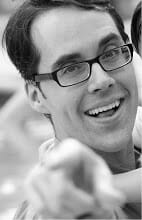Nearly 60 Years After She Helped Write History, NASA Gives Credit Where It's Due and Renames Facility
History is positively littered with little-known people who changed the course of world events. Just think about Norman Borlaug.
Never heard of him? Well, that’s not exactly surprising.
Borlaug was an agricultural scientist, which isn’t a profession that secures front-page articles. But his studies on plant genetics revolutionized farming and fed millions upon millions of hungry people.
Katherine Johnson is a similar figure. According to USA Today, she’s a mathematician, another job that hardly raises the heart rate.
However, her contributions proved vital to the U.S. space program. See, Johnson crunched the numbers that made several NASA missions successful.
She calculated the trajectory for astronaut Alan Shepard’s Mercury-Redstone 3 mission (aka Freedom 7). It was the United States’ first manned spaceflight.
Johnson also verified the computer-plotted orbit for Mercury-Atlas 6 (aka Friendship 7), which made John Glenn the first American astronaut to orbit the earth. Prior to the mission, he famously said, “Get the girl to check the numbers.”
If that sounds a little brusque, it was. Johnson is both female and African American, a brilliant woman whose genius also coincided with the height of segregation.
That caused many to all but ignore her during her heyday. But society has come to recognize the incredible woman she is and the impact she had, publishing of a spate of books that celebrate her, as well as releasing the big-budget 2016 film “Hidden Figures.”
NASA itself is now honoring the woman once dubbed a “computer in skirts.” WFAA reported that it is renaming a West Virginia facility after the mathematician.
Once called the NASA Independent Verification and Validation Facility, the structure in Fairmont, West Virginia, will now bear the name “the Katherine Johnson Independent Verification and Validation Facility.” It’s particularly apropos since Johnson hails from the Mountain State.
“I am thrilled we are honoring Katherine Johnson in this way as she is a true American icon who overcame incredible obstacles and inspired so many,” NASA Administrator Jim Bridenstine said in a statement. “It’s a fitting tribute to name the facility that carries on her legacy of mission-critical computations in her honor.”
“It’s an honor the NASA IV&V Program’s primary facility now carries Katherine Johnson’s name,” NASA IV&V Program Director Gregory Blaney added. “It’s a way for us to recognize Katherine’s career and contributions not just during Black History Month, but every day, every year.”
Johnson, who turned 100 in 2018, has also received other honors in recent years. In 2015, she was given the Presidential Medal of Freedom.
NASA also honored her by naming a research facility after her at its Langley Research Center in Hampton, Virginia, in 2017. It may be coming late, but her name is one that won’t be forgotten to history.
Truth and Accuracy
We are committed to truth and accuracy in all of our journalism. Read our editorial standards.
Advertise with The Western Journal and reach millions of highly engaged readers, while supporting our work. Advertise Today.










